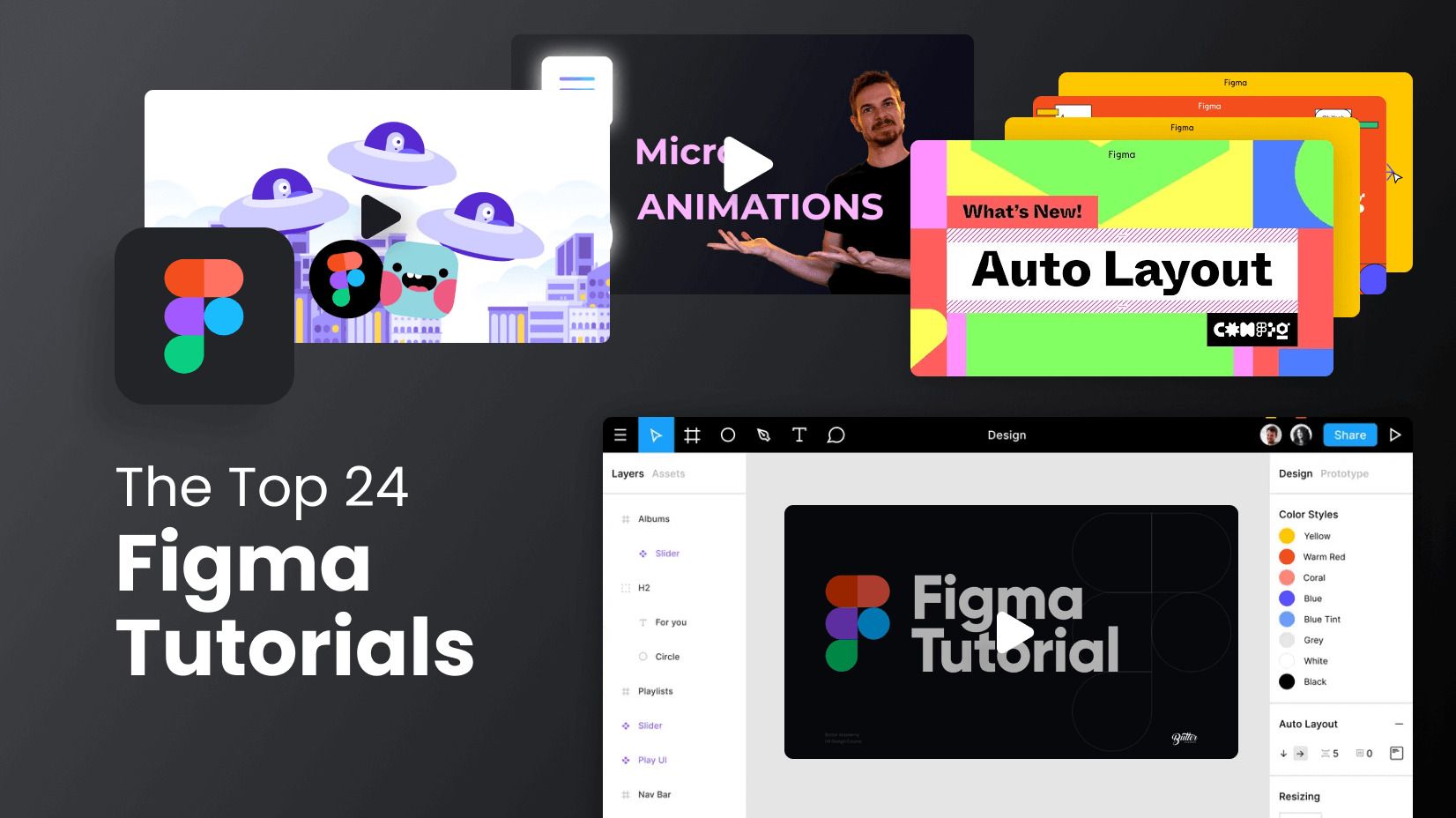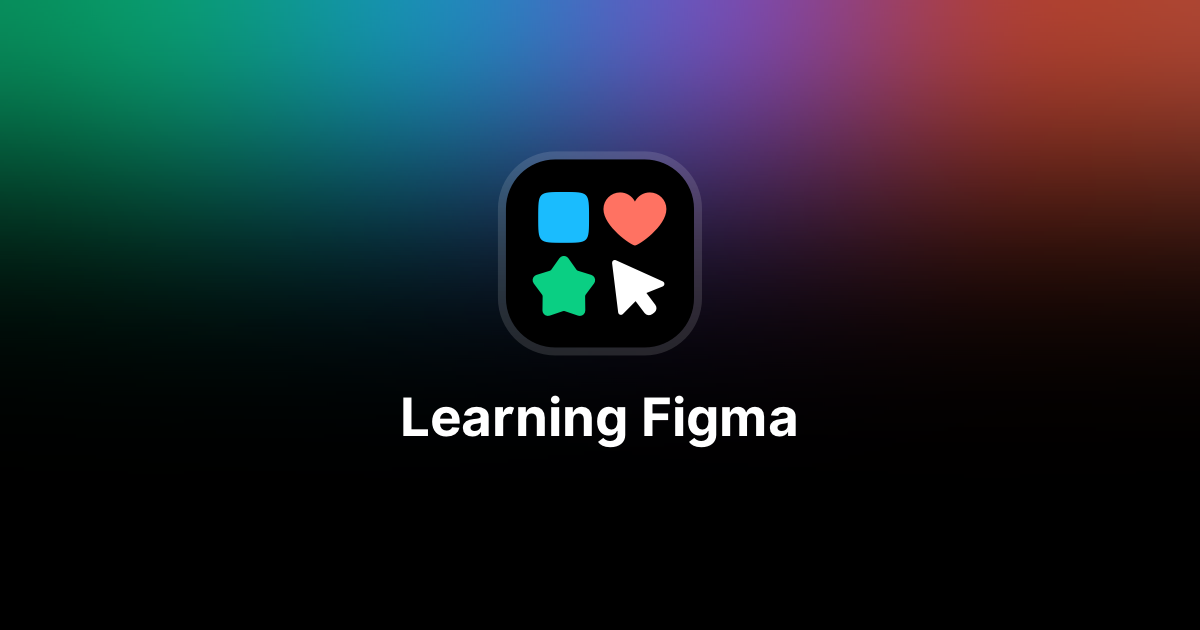Unbelievable Info About How Long Will It Take Me To Learn Figma

So, You Want to Conquer Figma? Let's Talk Timeframes
1. Understanding the Figma Learning Curve
Alright, so you're eyeing Figma. Smart choice! It's a powerhouse for design, and learning it can seriously boost your skills. But let's get real — how long will it actually take? That's the million-dollar question, isn't it? The truth is, there's no one-size-fits-all answer. It's like asking how long it takes to learn an instrument; it depends on your dedication, learning style, and, well, how much you practice!
Think of it this way: are you looking to strum a basic tune on a ukulele, or shred a guitar solo like Jimi Hendrix? The same principle applies to Figma. Do you just need to whip up some simple social media graphics, or are you aiming to design complex user interfaces for a cutting-edge app? Your goals heavily influence the time commitment involved. Someone transitioning from another design tool, like Adobe XD or Sketch, might find the learning curve less steep because they already grasp fundamental design principles. However, even experienced designers will need time to familiarize themselves with Figmas unique features and interface.
Your previous experience with design software also plays a big role. If you've never opened a design program before, you'll naturally have a longer journey ahead. But don't let that discourage you! Everyone starts somewhere. The important thing is to embrace the learning process and celebrate small victories along the way. Consider your familiarity with concepts like vector graphics, layers, typography, and color theory. If these terms are new to you, allocate extra time to understand them. Many free resources can help you grasp these basics before diving deep into Figma itself.
One last thought here — don't compare yourself to others. We all learn at our own pace. What takes one person a week might take another a month. Focus on your own progress and celebrate each milestone. Remember, the journey of a thousand miles begins with a single click (in Figma, probably a click on the "Create New Design" button!).

Breaking It Down
2. From Beginner to Figma Master (Eventually!)
Let's break down the learning process into skill levels and roughly estimate the time investment for each. Keep in mind, these are just guidelines. Your mileage may vary!
Beginner (Understanding the Basics): This stage involves familiarizing yourself with the Figma interface, learning about the different tools and panels, and understanding fundamental design principles. You'll be creating simple shapes, adding text, and maybe even attempting a basic logo design. Expect to spend around 1-2 weeks, dedicating a few hours each day. Focus on following tutorials, experimenting with different features, and building simple projects.
Intermediate (Applying Core Concepts): Now you're starting to create more complex designs, working with components, styles, and auto layout. You're also learning about prototyping and user flows. At this stage, you're probably comfortable tackling small to medium-sized projects. You'll likely spend 2-4 weeks, investing more time each day. Challenge yourself with more complex projects, such as designing a landing page or a mobile app screen. Seek feedback from other designers and actively participate in online communities.
Advanced (Mastering Advanced Features): You're now a Figma ninja! You're proficient in using all the advanced features, including variables, advanced prototyping, plugins, and collaboration tools. You're capable of designing complex user interfaces and leading design projects. Reaching this level can take several months to a year, depending on your dedication and the complexity of the projects you undertake. Focus on mastering advanced techniques, contributing to open-source projects, and sharing your knowledge with others.Realistically, becoming a true "Figma Master" is a continuous journey. There are always new features, plugins, and techniques to learn. The key is to stay curious, keep experimenting, and never stop learning.

The Best Tutorials To Learn Figma In 2024 Designer's Toolbox
The Power of Practice
3. Why Just Watching Tutorials Isn't Enough
You can watch all the Figma tutorials in the world, but if you don't actually use the program, you're not going to learn a thing. It's like trying to learn to ride a bike by reading a manual. You need to get on the bike, fall a few times, and eventually, you'll get the hang of it. Design is the same. Theory only takes you so far; it's the hands-on experience that truly solidifies your understanding.
Think of it as building muscle memory. The more you practice, the more automatic the processes become. You'll find yourself instinctively knowing which tool to use for a particular task, and you'll be able to troubleshoot problems more easily. And let's be honest, making mistakes is part of the learning process. Don't be afraid to experiment, break things, and learn from your errors. That's how you truly grow as a designer.
So, how can you get more hands-on practice? Start by setting small, achievable goals. Design a simple button, recreate a website header, or build a basic mobile app screen. The key is to choose projects that are slightly challenging but not overwhelming. As you gain confidence, gradually increase the complexity of your projects. Participate in design challenges, contribute to open-source projects, or offer your services to non-profit organizations. These are great ways to gain real-world experience and build your portfolio.
Another great tip is to find a design buddy or join a Figma community. Share your work, get feedback, and learn from others. Surrounding yourself with like-minded individuals can provide motivation, support, and valuable insights. And remember, learning is a journey, not a destination. Embrace the challenges, celebrate your successes, and never stop pushing yourself to improve.

How Long Does Figma Take To Learn? Web Design Tutorials And Guides
Resources Galore
4. Unlocking the Figma Knowledge Vault
Luckily, there's a wealth of resources available to help you learn Figma. From official documentation to community-created tutorials, there's something for everyone. The key is to find the resources that best suit your learning style and needs. Figma's own website offers comprehensive documentation and video tutorials covering everything from the basics to advanced techniques. These resources are a great starting point for understanding the fundamentals of the program.
YouTube is a treasure trove of Figma tutorials. Search for specific topics you're interested in, or follow channels dedicated to Figma design. Many talented designers share their knowledge and insights on YouTube, providing valuable tips and tricks. Platforms like Udemy and Coursera offer more structured Figma courses, often taught by industry professionals. These courses can provide a more comprehensive learning experience, with assignments, quizzes, and feedback from instructors.
Don't underestimate the power of the Figma community. There are numerous online forums, groups, and communities where you can ask questions, share your work, and connect with other designers. Platforms like Dribbble and Behance are great places to find inspiration and see how other designers are using Figma. Pay attention to the design trends and techniques showcased on these platforms.
Another often overlooked resource is Figma's own plugin library. Plugins can significantly enhance your workflow and provide access to new features and functionalities. Explore the plugin library and experiment with different plugins to find the ones that best suit your needs. Remember, the best way to learn is to experiment and explore. Don't be afraid to try new things and push the boundaries of what's possible with Figma.

Learn Figma In 15 Minutes 7 MustKnow Tips! YouTube
The Intangibles
5. Beyond Tutorials
It's not just about the hours you put in; your mindset and approach significantly impact how quickly you learn Figma. A positive attitude, a willingness to experiment, and a growth mindset can accelerate your progress. Think of it like this: if you approach learning Figma with dread and a fear of failure, you're likely to struggle. But if you embrace the challenges, view mistakes as learning opportunities, and celebrate small victories, you'll be amazed at how quickly you improve.
Your learning style also plays a crucial role. Are you a visual learner? Focus on watching video tutorials and studying design examples. Are you a hands-on learner? Dive into projects and experiment with different features. Are you a theoretical learner? Read the documentation and explore design principles. Tailor your learning approach to your preferred style for optimal results. Time management and consistency are also essential. Set realistic goals, create a study schedule, and stick to it. Even dedicating just 30 minutes each day can make a significant difference over time.
Consider your environment as well. A quiet, distraction-free workspace can enhance your focus and productivity. Minimize interruptions and create a dedicated learning zone. Don't be afraid to ask for help. Reach out to friends, colleagues, or online communities for support and guidance. Sharing your challenges and seeking feedback can provide valuable insights and accelerate your learning process.
Finally, remember that learning is a marathon, not a sprint. There will be times when you feel frustrated or overwhelmed. Don't give up! Take breaks, revisit the basics, and celebrate your progress. The key is to stay persistent, stay curious, and enjoy the journey. Before you know it, you'll be creating stunning designs and confidently navigating the world of Figma.
